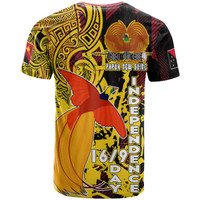Little-Known Things About The National Flower Of The Philippines
Posted by Anna on 20th Feb 2023
What is the national flower of the Philippines? Continue reading to find out the answer and some amazing information about this flower.
What is the Philippines' national flower?
Sampaguita is the Philippines' national flower. Although technically recognized as Jasmine Sambac, it is also referred to as Asian jasmine, Arabian jasmine, sacred jasmine, or Asiatic jasmine in everyday speech. It is the only recognized national flower of the Philippines, despite going by numerous names.

Sampaguita Philippines
Sampaguita is a member of the Oleaceae family and is not indigenous to the Philippines, despite being the country's national flower. Sambac jasmine has been traded and grown for thousands of years. Thus, scientists are unsure of its original origins. It was a favorite of both our forefathers and Filipinos.
Sampaguita is believed to have originated in India, but in the 1500s, Arab and Persian explorers transported it all over the world. According to experts, Sampaguita may have traveled in style across the Himalayas to the Philippines in the 17th century!
If you are interested in Sampaguita Flower T-shirts, please visit our online store HERE. In particular, we have a 15% discount code exclusively for the readers reading this article! Please insert code: POLYBLOG15 for your cart. Happy shopping!
Ancient legends about Sampaguita
According to legend, the monarchy was originally held by a young princess named Lakambini, who had lost her father. Lakan Galing, a noble prince from a nearby kingdom, gave her support because she lacked expertise as a ruler. They started dating. The prince and princess made the "sumpa kita" commitment one night while standing on a hill overlooking the sea.

Philippines National Flower
Lakambini, however, passed away from a broken heart since Lakan Galing departed to hunt down the princess's adversaries and never came back. The Sampaguita plant is claimed to have initially sprouted on the princess' grave when she was laid to rest on the hill where she and Lakan Galing exchanged their vows. The flower's name appears to have come from the Arabic word zanbaq, which means "jasmine," but isn't this origin tale more enchanting?
Sampaguita blooms are said to be short-lived, but according to a different Filipino tale, they nonetheless bring good into the earth. They set a positive example for everyone to follow.
Why is the Sampaguita the Philippines' national flower?
While the United States ruled the region, the Jasmine Sampaguita was chosen as the Philippines' national flower. It was chosen to represent the people by the American Governor-General Frank Murphy in February 1934 because it is a Filipino emblem of chastity, simplicity, strength, and humility. It is also the subject of numerous Filipino folktales.

Sampaguita Philippines
Sampaguita has been cultivated in royal gardens in the Philippines since the 17th century and is frequently used in religious rituals. For instance, Sampaguita-filled candles and incense are used to cleanse structures and keep evil outside.
Check out our Sampaguita Flower Jackets at HERE. In particular, we have a 15% discount code exclusively for the readers reading this article! Please insert code: POLYBLOG15 for your cart. Happy shopping!
Amazing facts about Sampaguita not everyone knows

Philippines National Flower
- In 1934, the Sampaguita was first designated as the Philippines' national flower.
- When then-Governor General Frank Murphy issued Proclamation No. 652, the Philippine government gave the little flower its present status. Remarkably, though, the Sampaguita, which was imported from the Himalayas, has been grown on Filipino land since the 17th century.
- The flower is sometimes referred to as Arabian Jasmine or Philippine Jasmine. Unlike the regular jasmine, which grows in bushes, the Sampaguita is a woody vine or a shrub that can partially climb.
- It is also one of the three national flowers of Indonesia, a neighboring country in Southeast Asia. Additionally, the Sampaguita is regarded as the flower of love in a number of other South Asian nations.
- There are three main types of sampaguita, all of which have classy names. The Maid of Orleans has single blooms with five rounded petals, the long-petaled Belle of India can produce both single and double flowers on the same plant, and the Grand Duke of Tuscany produces clusters of flowers as well as side blossoms that resemble small roses. A variation of the Belle of India is the fourth variety, the Mysore Mulli.
- Sampaguita produce no seeds. How, therefore, is the plant still grown so extensively? It must be cultivated from cuttings.
- The Philippines' national flower is linked to dedication, purity, fidelity, and divine hope, in addition to love. Necklaces made of petals and flowers are frequently sold by vendors. Sampaguita necklaces, in particular, are given as expressions of love with an eye toward marriage in Indonesia.
- The word "sumpa kita" is said to be the source of the flower's name. It means "I promise you."
- As if the aforementioned myth weren't convincing enough, the Sampaguita blooms at night and withers during the day.
If you are interested in Philippines Sampaguita Collection, please visit our online store HERE. In particular, we have a 15% discount code exclusively for the readers reading this article! Please insert code: POLYBLOG15 for your cart. Happy shopping!



















